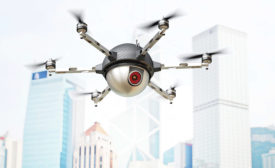Management
Duplicate Alerts Draining Security Analysts' Time
New research shows that 30 percent of analysts' manpower is lost to duplicate alerts.
November 22, 2016
Assessing Cybersecurity Risk Through CISO and C-Suite Collaboration
Defining an organization's cybersecurity risk is a team effort.
October 11, 2016
5 Ways Social Media is Changing Corporate Security
Does your team have a comprehensive strategy in place?
September 27, 2016
2016 Technology Report: New Security Solutions and Risks Go Hand-in-Hand
Security’s Tool Box: Bigger, Better and Sometimes Bad Edged
January 1, 2016
Sign-up to receive top management & result-driven techniques in the industry.
Join over 20,000+ industry leaders who receive our premium content.
SIGN UP TODAY!Copyright ©2024. All Rights Reserved BNP Media.
Design, CMS, Hosting & Web Development :: ePublishing












